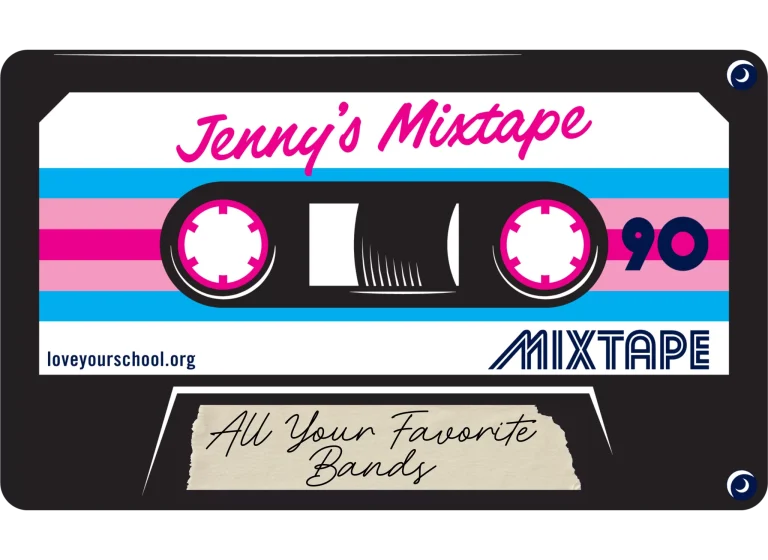“I hope that life without a chaperone is what you thought it’d be
I hope your brother’s El Camino runs forever
I hope the world sees the same person that you’ve always been to me
And may all your favorite bands stay together”
This MixTape is actually not about the above song from the band Dawes – but actually about one of my favorite bands that broke up – right as I had discovered and fell in love with them! I’m sure many of you have experienced similar pain – but the band was The Show Ponies and I missed one of their last touring shows – which happened to be in Prescott, Arizona back in 2017! So – where is this going? Well, as a mom who has been through the Child Find special education evaluation process many times since 2014, I can tell you that the emotional toll the process takes is hard for anyone to believe unless you’ve been through it. Back in 2017 when I was going through the process again with two kids – I started listening to The Show Ponies. Like any album that defines certain experiences or seasons of our lives, their album How It All Goes Down was on repeat constantly as a comfort and encouragement to me while navigating through that process. I even looked back through my phone and noticed screenshots I had taken of their album because I was sharing it frequently with friends that entire year.
While not everyone may like folksy jams and the lyrics that spoke to me from their album – I know you can resonate with rolling your windows down after a stressful situation and belting out a song that brings you through the situation and becomes a bit of your “fight song”.
So why do parents of students with disabilities need a fight song? Well, today’s mix-tape focuses on the challenges parents face obtaining a special education evaluation for their child. The public school identification process known as “Child Find” applies not only to public school students but also students on ESAs or STOs.
Because this is a highly complex topic that I could write 10 newsletters about (seriously!), I will limit my comments to only four areas:
- Challenges requesting evaluations
- Navigating the evaluation process
- Using evaluations to qualify for ESAs and STOs
- Policies that facilitate timely identification and access to services and/or scholarships
Requesting evaluations for identifying a student with a disability
This will be a brief, high level overview of this process: When a parent believes their child may need an evaluation to identify a learning or other disability that’s impacting their education, they can request an evaluation for free from their child’s public school. Students being homeschooled, in private school, or on ESA can request these evaluations for free as part of the Child Find process. The Individuals with Disabilities Education Act (IDEA) and its implementing regulations require that ALL children with disabilities who are in need of special education and related services, regardless of the severity of their disability, are identified, located, and evaluated.
From the parent’s perspective, this request for an evaluation can start with a conversation or with an email between the parent and the teacher or an administrator at the school. For homeschooling families, that is usually done via email to the principal or the district special education coordinator. After the request is made, the school has 15 school days to schedule a “review of existing data” (ROED) meeting. Can the school or district deny this initial meeting? Yes. Can the school delay this request over an entire summer and wait until fall? Yes. Arizona state rules require the ROED be scheduled within 15 school days, so if the request is made within the last 15 days of school or during the summer, the meeting is delayed for months until the fall.
But let’s continue – in the ROED meeting, if it’s granted, a team from the district comes together with the parent as a member of the team, to discuss the child and a decision is made about whether or not to move forward with evaluating. An evaluation then has to be completed within 60 days – with additional follow-up meetings.
Navigating the Process
While some parents breeze through this process feeling supported and understood by the school team members, it’s not an understatement to say that many parents feel the school team didn’t listen to their concerns, delayed the process, or didn’t agree to evaluate, adopting a “wait and see” approach. For example, many parents in the autism community share about getting a diagnosis from an MD or Neuropsychologist, only to have the school argue that because the child’s grades are “fine” they don’t qualify for services as the child’s autism is “not impacting their education.” Just google due process claims against school districts or inquire about the state’s special education complaint system, and you’ll see what I mean.
In the end the evaluation process can end up with different results, but it usually ends up with a 504 plan, an Individualized Education Plan (IEP), or a Multidisciplinary Evaluation Team (MET) Report, which is the report showing the child did or did not qualify for special education services. Parents can disagree with the results of the evaluation from the district and can request an Independent Educational Evaluation (IEE) at the district’s expense. However, most parents don’t know about this, districts can still deny it, and it lengthens the process a few more months. I know about this because when I was told that my child’s dyslexia was simply a “lack of a proper education” because I was homeschooling, I disagreed with my district, and requested two IEEs at the district’s expense. Turns out the district was wrong and both of my children got a diagnosis from a Neuropsychologist.
Evaluation Requirements for Tax Credits and ESAs
In Arizona, to qualify for the Disabled Displaced tuition tax credit scholarship (DD STO) or for an ESA for special education eligibility, a parent MUST go through the lengthy district process – even if they have a private diagnosis from a medical doctor or a Neuropsychologist (note: the Arizona Department of Education did allow private evaluations to be used from September 2022 – June 2023 but that process is being stopped – more on this in another Jenny’s MixTape).
As you can imagine, there are many challenges that keep parents from going through this intimidating, complex Child Find process. It’s difficult for parents moving to Arizona (or to any state with an ESA), having to go through the entire process again, just to qualify for an STO or an ESA with special education eligibility. The process also consumes valuable public school time and resources, and often delays funding and services by 4-5 months, at minimum.
Considerations:
- When policy makers consider tax credit scholarships or education savings accounts, they need to understand the intense burden placed on families if they’re required to go through the school district evaluation process to qualify for special education funding. States should consider allowing private evaluations from a qualified practitioner such as an MD or Neuropsychologist to qualify.
- Allowing private evaluations to qualify for STO and ESA funds frees up valuable school district resources and staff time.
- By allowing the use of prior private evaluations, parents and students can avoid unnecessary and additional mental and emotional stress involved with having to get evaluated again.
- States should consider accepting METs, IEPs, and 504 plans from other states, unlike Arizona – which requires in-state documents to be obtained, even for tuition tax credits.
- Nonprofits should be encouraged and funded to support families navigating the education evaluation process, considering that families who cannot afford an attorney or a Private Special Education Advocate are clearly disadvantaged through the process.
- Grant programs from the state or private philanthropy should be established to help pay for private evaluations because most insurance companies do not cover Neuropsychologist exams (and did you know that you can’t even get a dyslexia diagnosis from a school? It has to be from a Neuropsychologist!).
We should all work together to ensure students with disabilities are identified in a timely fashion and receive the services and funding they need to excel in their education.
Warmly,

Jenny







